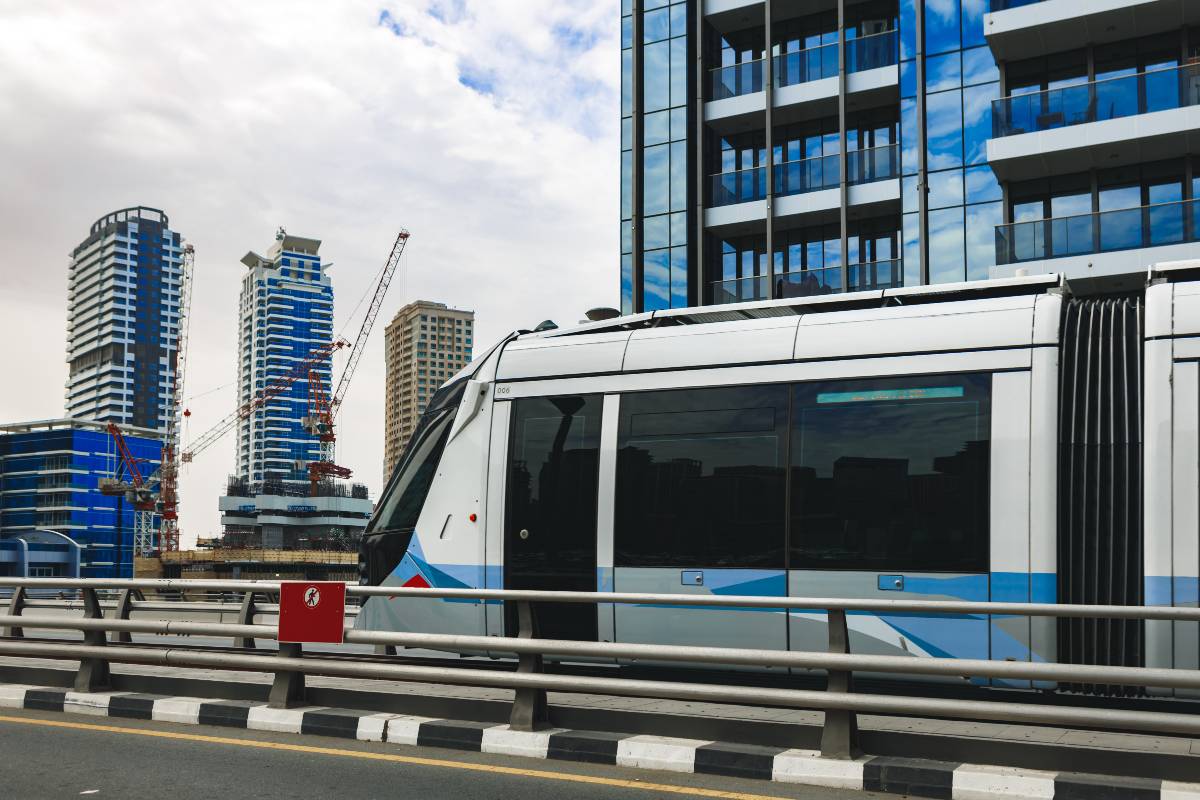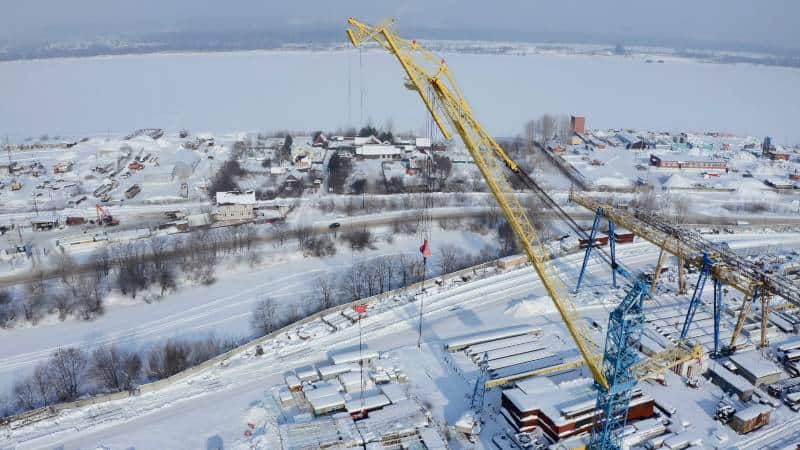As an 18-year veteran in the commercial real estate industry, I’ve seen firsthand the major benefits public transportation access delivers for property owners, investors, and occupants alike. My clients often ask me how proximity to buses, trains, light rail, and other transit options impacts asset value and performance.
In this blog post, I’ll break down the key reasons why the Value of Properties Near Public Transport elevates the appeal of commercial real estate, drawing on research from top industry organizations. I’ll also share actionable insights for landlords and tenants looking to capitalize on this value driver.
Key Takeaways
- Proximity to public transportation can increase commercial property values by 5-42%, with new transit infrastructure having an even greater impact.
- Commercial properties near transit see higher rents, lower vacancy rates, and faster appreciation thanks to improved liquidity and tenant demand.
- Major factors boosting value include increased walkability and livability, lower tenant transportation costs, and access to urban jobs and amenities.
Table of Contents
Why Transit Access Boosts Commercial Property Value
Let’s start with the numbers. The National Association of Realtors examined key metrics for commercial buildings located near public transportation across seven major metro areas.
The results were clear: proximity drives substantial value gains.
Commercial property prices saw significant increases near transit, with median sales prices per square foot rising 5-42% across four regions. Properties situated close to new rail stations, bus rapid transit, and other transportation infrastructure investments reaped especially notable rewards.
Faster Appreciation Rates and Higher Occupancy
But it’s not just an initial bump. According to research from Smart Growth America, commercial real estate next to transit also benefits from superior operating fundamentals over time.
Properties in these prime locations realized 4.5% higher net operating incomes, along with 10.4% higher market values and 0.2% lower cap rates on average. This translates into faster, more resilient growth in asset value thanks to higher rents and occupancy over decades-long holding periods.
Improved Liquidity and Tenant Appeal
Beyond direct value implications, proximity to public transit provides a major edge when it comes to finding and retaining tenants. The increased convenience and connectivity for commuters and customers massively expands the pool of prospective occupants.
Tenants gravitate towards buildings with transit access to tap into car-free commuting and arrive at destinations faster. For office users, transit proximity is a talent magnet, letting companies easily tap into the urban workforce. Meanwhile, retail occupants gain visibility from higher pedestrian traffic near stations.

The data shows these perks translate into a 5-15% rental premium for commercial buildings near transit across all sectors. Landlords also benefit from 50% faster lease-up velocities thanks to surging demand.
Key Factors Driving Value Gains
But what exactly makes proximity so potent in lifting real estate performance? Here are some of the core explanations:
- Walkability – Transit access enables car-free “last mile” connections, increasing foot traffic and supporting densification. This improves livability, expands the tenant pool, and drives value.
- Lower Costs – Easy access to public transport reduces transportation costs for tenants and their workforce. This saves money while expanding locational choices.
- Urban Connectivity – Transit unlocks quick access to downtown jobs, amenities, and resources. This fuels tenant utility derived from the property’s urban locale.
- Infrastructure Synergies – Proximity captures value from adjoining public transit infrastructure investments anchored to the area.
How Does Living Near Public Transit Impact Property Value?
Understanding the connection between public transit and property value
Proximity to public transit increases property values for both residential and commercial real estate. Properties located near transit enjoy higher sale prices and appreciation.
The influence of public transit on the real estate market
Easy transit access enhances neighborhood desirability and convenience. Buyers are willing to pay premiums for well-connected locations, driving up values.
Factors affecting property values near public transit
Key factors boosting values include lower transportation costs, easy accessibility, walkability gains, proximity to amenities, and value capture from infrastructure investments.

Impact of proximity to public transportation on home values
Homes within 1/2 mile of quality transit see over 15% higher values than comparable properties farther away. New transit infrastructure provides an additional value bump.
Transit-oriented development and property price
Integrating new housing/commercial density around transit hubs directly feeds price growth at both macro and micro levels. Sustainable density policies are key.
What Are The Benefits Of Living Near Public Transportation?
Reduced transportation costs for residents near public transit
Access lowers spending on cars and fuels by enabling more affordable mobility through transit.
Enhanced accessibility to public transit stations and services
Nearby residents enjoy convenient access to rapid transit services via walking/biking, supporting car-free lifestyles.
Increased property values near public transit stations
Buyer competition raises pricing for homes near in-demand transit access points.
Proximity to public transit and its impact on residential properties
Home buyers pay premiums of 5-8% for properties located within a 10-minute walk of transit stops.
The value of living within a half-mile of public transportation
“Location efficiency” within a 1/2 mile radius allows households to own fewer cars and save thousands.
How Can Proximity To Public Transit Influence The Decision To Buy A Home?
Factors that attract homebuyers to properties near public transit
Buyers now prioritize neighborhoods with convenient access to rail, bus, and other integrated mobility options.
Understanding the impact of transit-oriented development on homebuyers
Mixed-use density concentrated around stations signals location desirability and urban lifestyle perks.
Integration of public transportation in property marketing and sales
Savvy agents promote transit proximity, routes, and commuting times directly in listings to attract buyers.
Perceived benefits of living close to public transit in residential areas
Homeowners don’t need to use transit to benefit from signaling effects on lifestyle quality and convenience.
The correlation between public transit access and property sale price
Homes near high-demand transit consistently achieve higher sale prices and quicker sale velocity.
What Are The Considerations When Evaluating Property Values Near Public Transit?
Transit service performance and its effect on property prices
Premiums rely heavily on service quality, capacity, and ridership levels of adjoining transit infrastructure.
Comparing property values near different types of public transit systems
Values vary greatly near bus routes vs. rail stops based on desirability, frequency, and performance.
Assessing the influence of proximity to transit lines and stations on home prices
Best gains are seen within a 1/4 to 1/2 mile access radius. Impact diminishes gradually as the distance from the station increases.
Cost-saving opportunities for homeowners living near public transit
Transit proximity supports location efficiency, lowering household driving costs by thousands annually.
Impact of public transportation infrastructure on land values
Ongoing investments in maintaining and expanding transit networks protect sustained property value gains.
What Are The Key Factors Driving Property Appreciation Near Public Transportation?
Impact of transit-oriented development and its effect on property prices
Strategic build-out of mixed-use density around stations accelerates price growth around transit hubs.
Ridership trends and their influence on property values near public transit
Growing transit ridership reinforces service quality and boosts accessibility value premiums.
Residential demand and the proximity to public transportation services
Urbanization and shifting preferences heighten buyer appetite for transit-accessible property types.
Market analysis of homes near transit and their sale prices
Premiums observed for listings promoted with transit proximity across conditions.
Understanding public transport’s role in adding value to residential properties
Integrating mobility infrastructure unlocks significant value gains via access advantages and network effects.
The Future Is Bright for Transit-Oriented Commercial RE
As America continues to urbanize, demand for transit-accessible real estate promises to take off. Shifting lifestyle preferences and demographics, plus sustainability considerations, will likely accelerate the value premium commanded by commercial properties near high-quality public transport options.
Savvy landlords and investors are already locking in positions around existing and emerging transit hubs to capitalize on this trend. Tenants are following suit, trading higher rents for the properties’ utility and long-run cost savings.
The outlook shines bright for commercial assets integrating proximity with great design and urbane locales. Contact my office today to evaluate options tailored to your business real estate needs and objectives.
FAQs
What is considered “close” to public transit? Typically being within a quarter to half-mile radius of transit stations provides optimal access and value capture. But benefits have been measured for commercial properties situated as far as two miles away.
How much value does public transit proximity add? Commercial property values generally see a 5-42% price premium near transit. Meanwhile, properties next to new infrastructure can achieve over 16% higher median sales prices.
Which tenants most desire transit access? From corporate office users to retail occupants, all commercial sectors prize proximity. But millennials and Gen-Z show particular preferences thanks to lifestyle considerations.
Can older systems like buses or commuter rail also lift values? Yes. Although flashier modes like subways garner attention, commercial property owners also benefit from proximity to supporting transit networks. Rising ridership broadly supports value.
What other factors maximize value for transit sites? To optimize asset performance, landlords must also focus on providing transit-supportive design, local amenities, modern technology infrastructure, and creative placemaking.
Conclusion
As discussed here, integrating commercial properties with public transportation delivers measurable value. Landlords and tenants capitalizing on this key opportunity today will reap major rewards both now and over their entire holding period.
To determine how proximity could boost your property’s performance, schedule a consultation with me. With nearly 20 years of experience in the field, I can provide expert guidance tailored to your unique objectives. Let’s connect to evaluate options!




